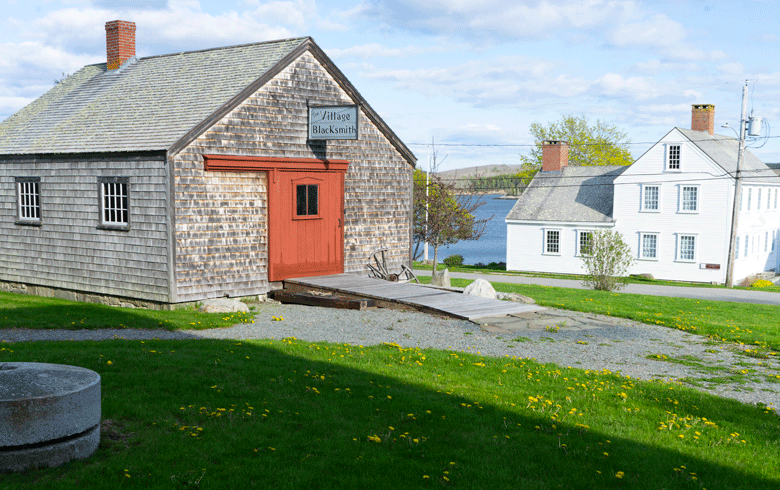I enjoyed Tom Groening’s photo essay on “Historic Castine” (The Working Waterfront, June). He did capture the sense of the village today. There was, however, one thing that he got wrong. The nations that fought over the place were not just the French, English, Dutch, and American colonists, but also Etchemins, who were the original inhabitants.
Castine was an important gathering place before the French established their trading post there in 1615. In 1611, a French trader and Jesuit priest met there with 300 Indians in 80 canoes and a shallop. No fewer than seven canoe routes converged there: One from upstream on the Bagaduce, one from the mouth of the river, three via portages across Cape Rosier, another from Morse Cove on the Penobscot to Grindle’s Eddy on the Bagaduce, and one on the isthmus where the British later dug their canal.
In 1615, the Mi’kmaqs succeeded in murdering Bashaba, and became the dominant power in the region.
By the time of the 1611 meeting, the region was a war zone. Owing to the disruption of established trade networks following the arrival of the French in Nova Scotia, Mi’kmaqs (known to the English as Tarrantines) embarked on raids along the coast as far afield as Massachusetts. In response, in defense of their homeland, Etchemins living between the Kennebec and Narraguagas rivers formed an alliance with Abenakis living between the Kennebec and Mousam rivers.
This Mawooshen (“people walking or acting together”) Confederacy was headed by a grand chief named Bashaba. He was in attendance at that 1611 meeting and seven years earlier met with Champlain in what today is Bangor. It was at that 1604 meeting that friendship was established between the Etchemins, their allies, and the French.
In 1615, the Mi’kmaqs succeeded in murdering Bashaba, and became the dominant power in the region. Soon, however, their power waned, by which time the major threat came from the British colonists to the south.
In 1626, the French were ousted from their trading post on the Bagaduce by Plymouth colonists, but regained control in 1632. They then constructed Fort Pentagoet. The name comes from the Indian word pentagwet, the word for the lower falls of the Bagaduce. Penobscot comes from the native name for the cliffs at Dyce’s Head—“place of the descending rocks”—an important landmark when out on the water. This was not the only place so-named; it was also applied to the river from the head of tide to Old Town.
The French were again ousted by British colonists in 1654, but French control was restored in 1670. Arriving at the fort with the new governor of Acadia was a young lieutenant, the future Baron de St. Castin. He quickly established an alliance with the regional Etchemin chief, Madockawando (“Wonder Worker,” a name reflecting his reputation for having strong supernatural powers) through marriage to one of his daughters.
In 1674, Fort Pentagoet was destroyed by Dutch raiders, after which St. Castin established a homestead and trading post on the north shore of Hatch’s Cove. This was the target of a raid by British colonials in 1688. By this time, St. Castin was involved with Madockawando in raids on colonial settlements in an effort to stave off further invasions by colonial settlements.
Then, in 1675, all out warfare erupted in southern New England, as indigenous people there made a last, desperate bid to save their independence. To make matters worse, in the same year, William Waldron kidnapped 15 Indians near Machias, whom he sold into slavery in the Azores.
To the Etchemins and their Abenaki allies in and around Penobscot Bay, watching the destruction of native people of the New England colonies must have made it clear that they would be next on the “hit list” of the British. So in 1676, the first of six wars the Etchemins waged began, along with their French and Indian allies, to defend their independence. In these wars, Madockawando, St. Castin, and later his several sons (from a marriage to a second daughter of Madockawando) carried out numerous raids on colonial settlements in Maine from their homes on the Bagaduce.
In the end, though, there simply weren’t enough of them to match the massive influx of people immigrating into the New England colonies. By 1760, all was lost, and “white” settlers took over.
The bottom line: Castine and the surrounding region has a rich Indian history, which should not be ignored.
William A. Haviland is an anthropologist and author of Canoe Indians of Down East Maine. He lives on Deer Isle.





